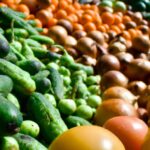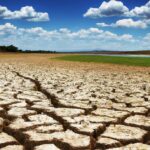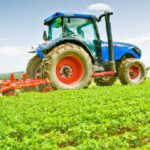Global climate change is profoundly impacting food security, posing significant challenges for communities worldwide. Rising temperatures and erratic weather patterns disrupt agricultural systems, threatening crop yields and livestock productivity. Droughts and floods become more frequent, causing crop failures, soil erosion, and decreased water availability. Pest and disease outbreaks also increase, jeopardizing food production. Subsistence farmers, already vulnerable, face heightened risks as they struggle to adapt to changing conditions. Small-scale farmers are particularly impacted, as they lack the resources to invest in climate-resilient practices. Food prices escalate, exacerbating hunger and malnutrition. Immediate action is vital. Investments in sustainable agriculture, resilient farming techniques, and climate-smart practices can help mitigate the effects of climate change on food security, safeguarding livelihoods and ensuring access to nutritious food for all.
Table of Contents
- Causes of global climate change
- Changes in crop patterns and food availability
- Impact of climate change on agricultural productivity
- Strategies for adapting to climate change in agriculture.
- Water scarcity and its effect on food production
(The effects of Climate Change on Food Security and Nutrition)
Global climate change has a profound impact on food security worldwide. Rising temperatures, changing rainfall patterns, and extreme weather events like droughts and floods have detrimental effects on crop production and livestock rearing.
Warmer temperatures accelerate the growth rate of insects and pests, leading to increased crop damage and reduced yields. Changing rainfall patterns disrupt the availability of water for irrigation, resulting in water shortages and crop failures. Consequently, farmers face economic losses and struggle to meet the increasing demand for food.
Small-scale farmers, particularly in developing countries, are the most vulnerable to these climate-induced challenges. Their limited access to resources, such as advanced agricultural technologies and financial support, exacerbates their struggles. As a consequence, food prices rise, and food becomes less accessible for populations already living in poverty.
Climate change also affects the nutritional quality of food. Higher levels of carbon dioxide in the atmosphere can decrease the concentration of essential nutrients in crops, such as iron, zinc, and protein. This phenomenon, known as “hidden hunger,” can have severe health implications, especially for vulnerable groups like children and pregnant women.
To address these challenges, countries must adopt climate-smart agricultural practices. This includes diversifying crops, improving water management systems, and promoting sustainable farming techniques. Additionally, investing in agricultural research and development can lead to the creation of climate-resilient crop varieties.
International cooperation is crucial to mitigate the impact of global climate change on food security. Developed countries should provide financial and technical assistance to developing nations to help them adapt to changing climate conditions and strengthen their agricultural systems.
In conclusion, global climate change poses significant threats to food security. It affects crop production, livestock rearing, and nutritional quality, particularly in vulnerable populations. Urgent action is needed to mitigate these challenges and ensure a sustainable and resilient food system for the future.
Causes of global climate change
Causes of global climate change can be attributed to various factors. One significant factor is the burning of fossil fuels, such as coal, oil, and natural gas. These fuels release carbon dioxide into the atmosphere, trapping heat and causing the Earth’s temperature to rise. Deforestation is another major contributor to climate change. Trees play a crucial role in absorbing carbon dioxide, so when forests are cut down, the amount of CO2 released into the atmosphere increases.
Industrial activities also contribute to climate change through the release of greenhouse gases, such as methane and nitrous oxide. These gases are emitted during manufacturing processes, mining activities, and the burning of waste. Additionally, agricultural practices, particularly livestock farming, release substantial amounts of methane, a potent greenhouse gas.
Another factor influencing global climate change is the increase in population and urbanization. As the population grows, so does the demand for energy, resulting in higher emissions. The expansion of urban areas leads to the destruction of natural habitats, further exacerbating climate change.
Furthermore, changes in land use, including agriculture and urban development, also contribute to global climate change. For example, the conversion of natural grasslands into farmland releases significant amounts of CO2, while the construction of buildings and infrastructure reduces the capacity of the land to absorb carbon dioxide.
Lastly, natural factors such as volcanic eruptions and variations in solar radiation can also affect the Earth’s climate. Volcanic eruptions release large amounts of ash and gases into the atmosphere, which can lead to temporary cooling. Solar radiation variations, on the other hand, can influence climate patterns over long periods.
In conclusion, global climate change is a complex phenomenon caused by a combination of factors. These include the burning of fossil fuels, deforestation, industrial activities, agricultural practices, population growth, urbanization, changes in land use, and natural factors. Understanding these causes is essential in addressing the effects of climate change, such as its impact on food security. By reducing greenhouse gas emissions, promoting sustainable practices, and protecting natural resources, we can mitigate the effects of climate change and ensure a more secure future for our food supply.
Changes in crop patterns and food availability
Changes in crop patterns and food availability are strongly influenced by global climate change. As temperatures rise, precipitation patterns change, affecting the growth and yield of crops. This, in turn, has a direct impact on food availability and security.
One notable change is the shift in crop-growing seasons. With warmer temperatures, the length and timing of planting and harvesting seasons are altered. This poses challenges as traditional crop calendars no longer align with the new climate patterns. Farmers need to adapt by adjusting their planting and harvesting schedules to ensure optimal crop growth.
Additionally, changes in rainfall patterns affect irrigation systems and water availability. Some regions may experience more frequent and intense droughts, leading to water scarcity for agricultural purposes. This further decreases food production and availability. In contrast, other areas may experience heavier rainfall, leading to waterlogging, soil erosion, and crop damage.
Climate change also influences pest and disease outbreaks, further impacting crop patterns and food availability. Warmer temperatures and altered rainfall patterns create favorable conditions for pests and diseases to thrive. As a result, crop yields are reduced, leading to food shortages.
Furthermore, climate change affects the geographic distribution of crops. Some crops may no longer be suitable for certain regions due to changes in temperature and precipitation. This can lead to the displacement of traditional crops and the emergence of new crops that can withstand the new climate conditions. However, this transition can be challenging for farmers who may not have the necessary knowledge or resources to switch to different crops.
The changes in crop patterns and food availability have significant implications for global food security. Food shortages can lead to higher prices, making it difficult for vulnerable populations to access nutritious food. This can exacerbate existing inequalities and increase the risk of malnutrition and hunger.
Addressing the impacts of climate change on crop patterns and food availability requires a multi-faceted approach. It involves implementing sustainable agricultural practices, improving water management systems, promoting crop diversification, and providing support and resources to farmers. Additionally, global cooperation is needed to mitigate greenhouse gas emissions and limit the effects of climate change on food security.
In conclusion, global climate change is causing significant changes in crop patterns and food availability. The shifting seasons, altered rainfall patterns, and increased pest and disease outbreaks directly impact food production and compromise food security. It is crucial to address these challenges through adaptive strategies and international collaboration to ensure a sustainable and secure food supply for future generations.
Impact of climate change on agricultural productivity
Climate change has had a profound and detrimental impact on agricultural productivity, posing significant threats to global food security. Rising temperatures, extreme weather events, and changing precipitation patterns are all contributing to the challenges faced by farmers worldwide.
One of the most apparent consequences of climate change is the alteration of growing seasons. Changes in temperature and rainfall patterns are disrupting the traditional timing of planting and harvesting. This disruption leads to reduced crop yields and increased vulnerability to pests and diseases. Farmers are now facing the immense challenge of adapting to these unpredictable conditions.
Increased temperatures also have a direct impact on crop growth. Higher temperatures accelerate the rate of evaporation, causing soil moisture depletion and water scarcity. As a result, droughts become more frequent and severe, jeopardizing crop production. With limited access to water resources, farmers struggle to maintain healthy crops and sustain their livelihoods.
Furthermore, extreme weather events such as hurricanes, floods, and storms are becoming more frequent and intense due to climate change. These events can easily destroy agricultural infrastructure, damage crops, and wash away fertile topsoil. The aftermath of these disasters leaves farmers devastated and struggling to recover from the substantial losses incurred.
Climate change also affects the geographical distribution of pests and diseases. Warmer temperatures allow pests and pathogens to survive in regions where they previously could not. This new presence puts substantial pressure on crops, leading to decreased yields and quality. Farmers now have to invest more in pest control measures, adding to the financial burden they already face.
Moreover, climate change exacerbates the problem of food insecurity. The already vulnerable regions, particularly those in developing countries, suffer the most due to limited resources and infrastructure to adapt. As agricultural productivity declines, food prices rise, making it even more challenging for the most vulnerable populations to access adequate nutrition.
In conclusion, the impact of climate change on agricultural productivity is undeniable. Rising temperatures, extreme weather events, disruptions in growing seasons, and increased pest and disease pressure all hinder farmers’ ability to produce sufficient food. The consequences are far-reaching, with food security and the livelihoods of millions at stake. Urgent action is needed to mitigate the effects of climate change and build resilience in the agricultural sector to ensure a sustainable and secure food future for all.
Strategies for adapting to climate change in agriculture.
Agriculture is set to bear the brunt of the adverse impacts of climate change, posing a significant threat to global food security. As temperatures rise, extreme weather events such as droughts, floods, and heatwaves have become more frequent and intense. These changes directly affect the productivity of crops, livestock, and fisheries, undermining food production systems worldwide. To secure food for future generations, it is crucial to develop effective strategies for adapting to climate change in agriculture.
One key strategy is to promote sustainable farming practices that conserve natural resources, enhance soil health, and minimize greenhouse gas emissions. Implementing agroforestry techniques, such as planting trees alongside crops and rearing livestock in grazing systems, can help to maintain soil moisture and reduce the impact of heat stress. These practices also play a vital role in sequestering carbon dioxide, contributing to climate change mitigation.
Another crucial aspect of climate change adaptation in agriculture is the use of climate-resilient crop varieties. By developing and cultivating crops that can tolerate high temperatures, droughts, and pests, farmers can safeguard their harvests against climate-related risks. This can be achieved through the breeding of new crop varieties or the introduction of well-adapted species from other geographic regions.
Furthermore, improving water management practices is essential to counter the increased variability in rainfall patterns caused by climate change. Implementing efficient irrigation techniques, such as drip irrigation and precision farming methods, can ensure optimal water usage and reduce the risks of water scarcity. Water storage facilities, such as dams and reservoirs, also play a critical role in managing water resources during periods of drought.
In addition to these on-farm strategies, it is essential to strengthen the capacity of farmers to access and utilize climate information and technologies. Providing training and support services can help farmers make informed decisions about planting dates, irrigation schedules, and pest and disease control. Access to improved weather forecasting systems and early warning mechanisms can enable farmers to anticipate and adapt to weather extremes, minimizing crop losses.
Moreover, policymakers need to prioritize agricultural adaptation in national and international climate change agendas. Investing in research and development, promoting knowledge sharing and providing financial incentives can accelerate the adoption of climate-smart agricultural practices. Collaborative partnerships between governments, research institutions, and farmers’ organizations are crucial for effective implementation and scaling up of adaptation strategies.
By embracing these strategies for adapting to climate change in agriculture, we can pave the way for a more resilient and sustainable food production system. Taking immediate action to address the impacts of climate change in the agricultural sector is crucial to ensure food security for present and future generations. The time to act is now.
Water scarcity and its effect on food production
Water scarcity has become a pressing issue globally, with severe repercussions on food production. As climate change intensifies, the availability and distribution of water are increasingly affected. This, in turn, has a profound impact on agriculture and threatens food security.
Water scarcity disrupts various aspects of the food production system. Firstly, it limits the amount of water available for irrigation, decreasing crop yields and compromising the overall productivity of agricultural systems. Farmers face the challenge of balancing water usage between different crops, often resulting in reduced harvests and economic losses.
Moreover, water scarcity affects the quality of water used in agricultural practices. Limited water supplies lead to an accumulation of salts and other contaminants, making water unsuitable for irrigation. This hinders plant growth, reducing crop quality and quantity.
Livestock production is also significantly impacted by water scarcity. Water scarcity reduces the availability of drinking water for livestock, which affects their health, growth, and overall productivity. Consequently, food production derived from livestock, such as meat, milk, and eggs, may decrease, contributing to an overall decline in food availability.
Water scarcity also influences the choice and availability of crops. Farmers may be forced to shift to drought-tolerant crops, which often have lower nutritional value or limited market demand. This not only impacts the diversity of food available but also undermines the nutritional value of diets, potentially leading to malnutrition and other health issues.
The effects of water scarcity on food production extend beyond the immediate impact on crops and livestock. As agriculture becomes less viable due to limited water resources, rural communities relying on farming as their main source of income suffer economic hardships. This further exacerbates poverty and inequality, placing additional strains on food security.
To effectively address the impacts of water scarcity on food production, a comprehensive approach is necessary. This includes implementing sustainable water management practices, improving irrigation efficiency, and promoting the use of drought-resistant crop varieties. Additionally, increasing investments in water storage and rainwater harvesting systems can help mitigate the effects of water scarcity.
In conclusion, water scarcity poses a significant threat to food production and food security. As climate change continues to alter global weather patterns, water availability is increasingly limited. This affects crop yields, livestock production, crop choices, and rural livelihoods. Addressing water scarcity is crucial to ensure a sustainable and secure food supply for present and future generations.













